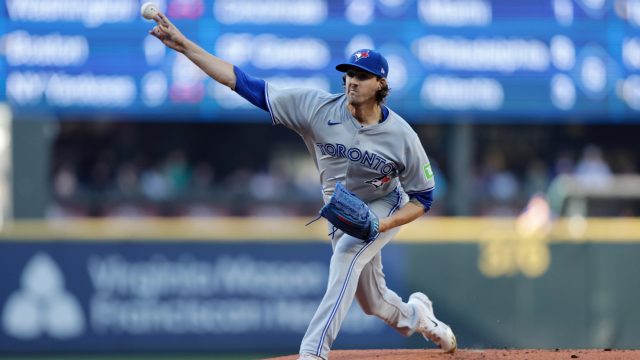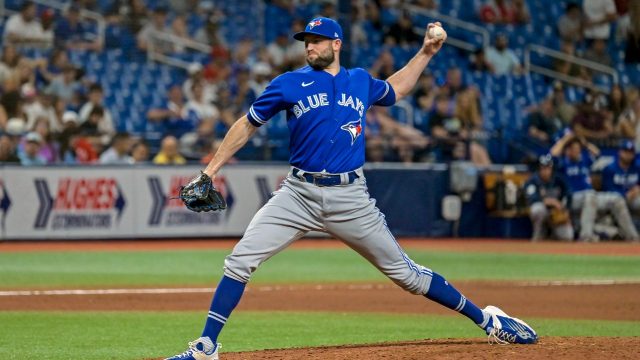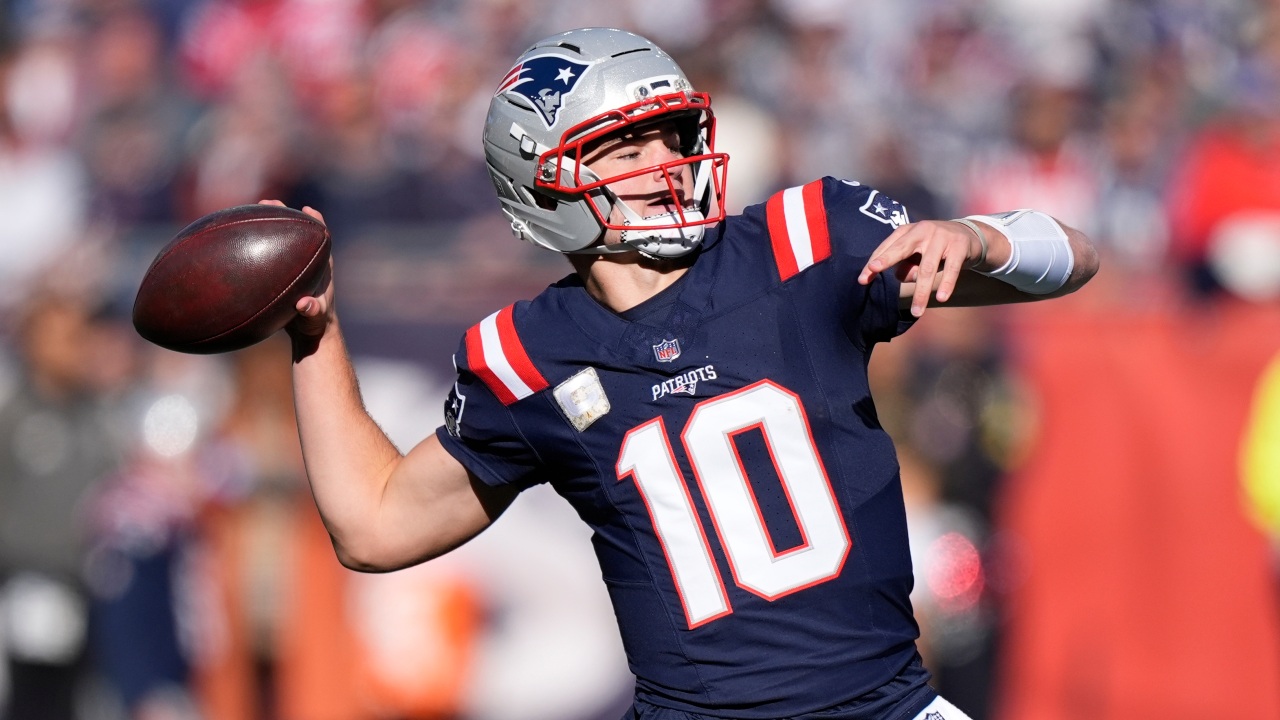
SEATTLE — Among the myriad roster issues the Toronto Blue Jays must address between now and the 2025 season — an offence lacking power, a tattered bullpen, a starting catcher vacancy — organizational pitching depth looms large.
For the second consecutive season, the club hasn’t had enough of it. In 2023, when Alek Manoah’s persistent struggles proved untenable, the Blue Jays had no choice but to use bullpen days in place of a fifth starter by mid-June. In 2024, when Manoah was sidelined with an elbow injury in late May, Toronto arrived at that same outcome weeks earlier.
Repeatedly running out of viable options as soon as one pitcher exits the rotation is an issue. As is the fact Manoah is the only drafted-and-developed starter the club has promoted to the majors since 2022. Going back to 2020 and expanding the field to include minor-leaguers acquired and graduated to the majors as starters — Max Castillo, Thomas Hatch, Anthony Kay, Nate Pearson, Trent Thornton, T.J. Zeuch — doesn’t paint a more flattering picture.
Chris Bassitt, Jose Berrios, Kevin Gausman, and Yusei Kikuchi have made 80 per cent of Toronto’s starts since the beginning of the 2023 season. Add in Manoah and it’s 90 per cent. The word unsustainable doesn’t feel strong enough. Bassitt and Gausman are in their mid-30’s; Kikuchi’s a pending free agent; Manoah’s out for at least the first half of 2025. The Blue Jays are going to need more starters. Soon. And their recent track record of developing them is alarming.
Which is why there’s so much at stake over the next three months for Yariel Rodriguez, who threw six scoreless, one-hit innings for the Blue Jays on Saturday in a closer-than-it-ought-to-have-been, 5-4 win over the Seattle Mariners. The Cuban right-hander’s ability to emerge as a rotation option between now and spring training could have a sizable impact on just how much reinforcing the Blue Jays pitching staff requires this winter.
A hyper-efficient Rodriguez certainly looked the part his last time out — on Canada Day vs. the Houston Astros — when he completed more than four innings for the first time in 15 outings this year between triple-A and the majors. He left with two out in the seventh having allowed only a run on two hits and two walks while striking out six. He ran up 13 swinging strikes and earned nine of his 20 outs with three or fewer pitches.
And he came close to matching that performance Saturday, retiring the first 10 batters he faced on 45 pitches before back-to-back fourth-inning walks created a jam he’d need some help escaping. Cue Daulton Varsho, making his second game-changing play in as many days, ranging 60 feet to basket catch a Ty France flare in left before doubling a runner off at second:
Rodriguez didn’t allow a hit until the fifth, when he jammed Luke Raley with a fastball in on the hands but still watched a 67-m.p.h. lob fall into shallow left field. The leverage increased when Raley advanced to second on a one-out balk, but Rodriguez rallied to get a weak flyout before striking out Mitch Haniger with a filthy slider that started middle-away and finished off the plate.
Rodriguez kept right-handed hitters in between like that all afternoon while living arm-side away from the five left-handers in Seattle’s lineup. He finished his day with a three-up, three-down sixth on only nine pitches, striking out his sixth batter of the day in the process with a filthy breaking ball down-and-in to JP Crawford. That gave Rodriguez a 30-per-cent whiff rate over his last two outings combined.
Meanwhile, Alejandro Kirk’s three-hit day helped propel the Blue Jays offence, as he cashed the game’s first run in the third with a 109-m.p.h. line drive to the left-field wall. Another run crossed in the sixth when Vladimir Guerrero Jr. reached practically into the opposite batter’s box to flip a Collin Snider sweeper into shallow left.
And in the seventh, the Mariners intentionally walked Varsho with one out to load the bases for Kirk, who came through again with a sacrifice fly to right. It was Kirk’s third ball in play on the afternoon at 104 m.p.h. or harder. Springer was the only other player in the game with one.
It was a rare day in this botched Blue Jays season when the team’s starting pitching (six-inning shutout), offence (11 hits, five walks), and bullpen (a mere four runs allowed over three innings — that’s progress!) all performed concurrently. That fact is why Toronto sits nine games under .500 and eight back of the AL’s third wild-card spot — a predicament that presented them with 1.7-per-cent FanGraphs playoff odds Saturday morning.
The reality of the situation is that the rest of this season will almost certainly be about evaluating what this club has in place for 2025, what it doesn’t, and what it will need to obtain between now and then. And as far as Rodriguez is concerned, that assessment revolves around how well he performs as a starter between now and the fall, how viable he is as a rotation piece in 2025, and how much workload he could potentially absorb in that role
Remember, the last time Rodriguez started regularly was as a raw 22-year-old in the Cuban National Series before the pandemic. Over the four years since, he’s worked as a reliever in Japan and sat out an entire season awaiting international free agency. He’s still relearning how to ride the bike and still very much a project for the Blue Jays pitching group, including major-league pitching coach Pete Walker.
“He can do a lot of things with the baseball. He can sink it, split it, cut it. There’s a curveball, a slider,” Walker says. “He’s got some weapons.”
Rodriguez’s challenge certainly isn’t stuff — it’s finding a better mix of those five pitches, being efficient, and locating his fastball more consistently. That’s started with throwing more fastballs early in games to gain a quicker feel for the pitch. It isn’t a coincidence that 12 of Rodriguez’s 13 pitches in a three-up, three-down first inning Saturday were fastballs.
It’s also involved refining Rodriguez’s delivery, which is featuring fewer hesitations and arm slot discrepancies with each passing outing. The Blue Jays want the 27-year-old repeating his delivery to find rhythm and a consistent release point early in his starts, saving the creativity for later innings after he’s established his command.
The club is also working with him to lean further into the natural cut on his fastball and focus less on trying to miss bats with ride. Throwing to generate that carry impacts Rodriguez’s ability to locate his fastball in the zone, which leads to falling behind and letting hitters sit on mislocated arm-side sliders that hang up over the plate.
The Blue Jays believe the cut on Rodriguez’s fastball is good enough on its own to get called strikes, foul balls, and quick, weak-contact outs when he’s using it away from righties and either backdoor or up-and-in to lefties. But it has to be in the zone. That’s what sets him up to tunnel sliders away from righties (i.e. the Haniger strikeout) and work down with curveballs and splitters to lefties (i.e. the Crawford strikeout).
“[Rodriguez’s fastball] is a good pitch. He’s got one cutting and one sinking,” manager John Schneider says. “It’s tough to harness that. I think that’s where he was earlier — he was caught between those two. But I think his fastball definitely plays in the zone.”
The Blue Jays have many matters to resolve ahead of 2025 if this month’s trade deadline resembles — as expected — a soft reset rather than an aggressive tear down. A lack of offensive thump, reliable relief, a full-time catcher, starting pitching depth. That’s a lot of heavy lifting between now and spring. But if Rodriguez keeps pitching like this, he’ll lighten the load.






